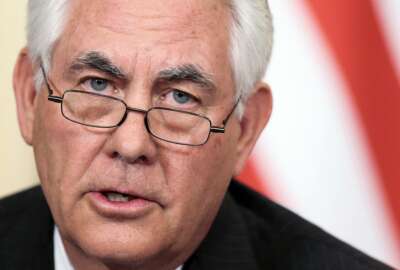
How to carry out a headcount reduction
Secretary of State Rex Tillerson will have to create a two-way communication channel in which people don't just feel they're heard but also comprehended.
I’m still pondering the fact that, with $250 billion in cash, Apple could — according to a Wall Street Journal calculation — buy every U.S. employee a Bugatti Chiron. That’s a car with a face like an Edsel but with a $3 million tag and a speedometer going to 500 mph.
Think about that the next time you pre-order a $600 iPhone.
Down here on earth, federal agency managers continue to deal with what feels like barely enough money. Don’t feel bad. Big, rich companies are equally parsimonious with individual program budgets, headcounts and salaries. You’d don’t amass 250 billion big ones by extravagance.
In theory, agency managers are busy at work coming up with internal reform plans, per President Donald Trump’s Week 12 executive order, to become more efficient and reduce staff where warranted.
Is that even doable, expecting people to preside over their own agency shrinkage?
It’s possible. I had breakfast the other morning with a one-time federal agency head. He served during the George W. Bush administration after a successful business career.
His charge from Bush personally was to modernize this very old agency. When he left the agency after four years, it was 30 percent smaller by headcount and turning back money to the Treasury from the services it rendered to other agencies. It was on a path to modern technology.
How did he get all this done? In part, he says, by doing something very basic. Namely, engaging the career senior executives, union leaders and many line employees involved. It required explaining the goals and what was at stake, but also listening and being willing to compromise. He says many of the ideas for cost and staff cuts came from employees themselves. While headcount went down, salaries did not. Several rounds of buyouts gave enough people incentive to leave for other horizons.
Secretary of State Rex Tillerson says he’s looking to cut his headcount by 3 percent, or 2,300 employees. Published reports have described his first couple of months on the job as aloof from most of the workforce. Now he says he’ll be conducting a “listening tour” of State Department employees.
That’s a good start. More than listening, Tillerson will have to create a two-way communication channel in which people don’t just feel they’re heard but also comprehended. They won’t step up en mass and volunteer to give up their jobs. But with a rational approach some percentage will conclude they have better opportunities elsewhere in the government and move or take a buyout.
Similarly, a bill contemplated by Rep. Mike McCaul (R-Texas), chairman of the House Committee on Homeland Security, would reorganize parts of the Homeland Security Department to end up with a special cybersecurity agency. If that’s the desire of Congress and the White House, so be it. But surely among the squadrons of cyber people already scattered around the Science and Technology and National Programs and Protections Directorates you’ll find lots of people with solid ideas on how the details of such an agency would look — and what existing redundancies would make good candidates for consolidating.
Copyright © 2025 Federal News Network. All rights reserved. This website is not intended for users located within the European Economic Area.
Tom Temin is host of the Federal Drive and has been providing insight on federal technology and management issues for more than 30 years.
Follow @tteminWFED







